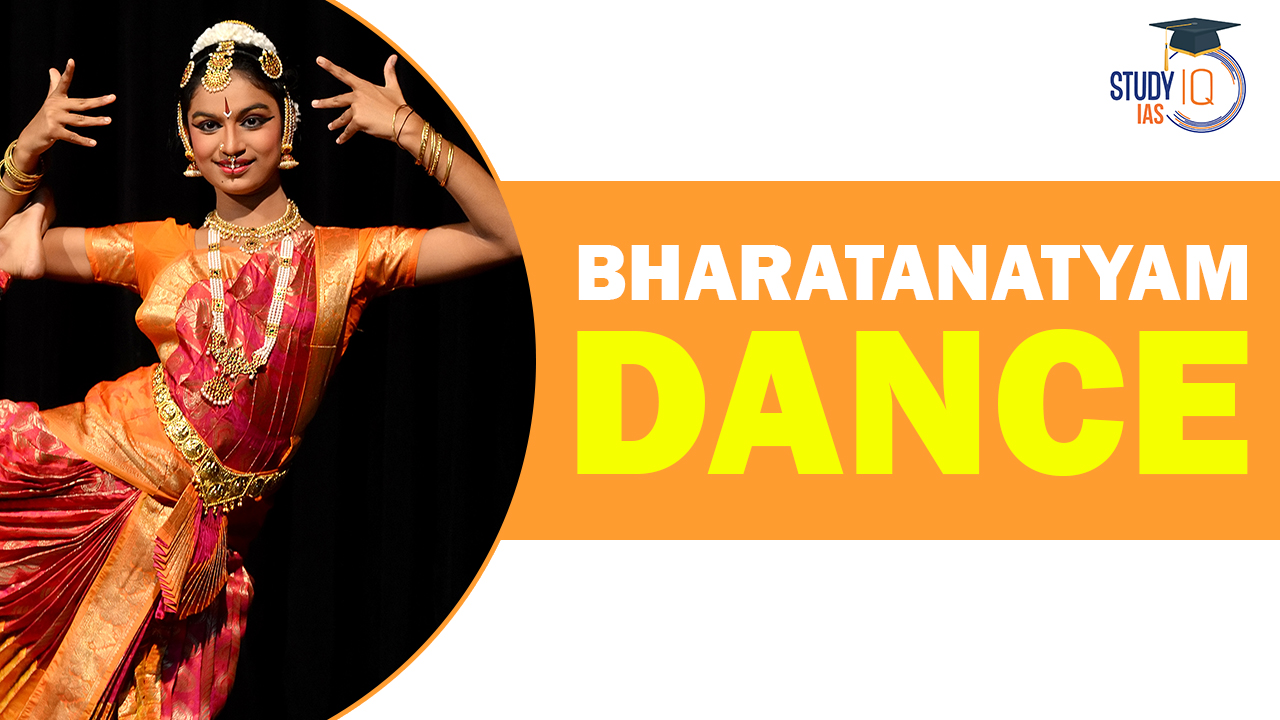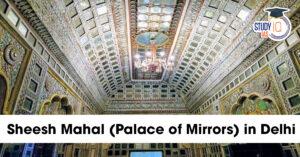Table of Contents
Bharatanatyam is a classical dance form that traces its origins to the temples of Tamil Nadu in South India. Its roots can be found in the ancient Natya Shastra, a comprehensive treatise on the performing arts attributed to the sage Bharata. Over the centuries, Bharatanatyam has evolved into a highly sophisticated and expressive dance form, reflecting the rich cultural and spiritual traditions of India.
Bharatanatyam: Indian Classical Dance
Bharatanatyam, a revered Indian classical dance, originated in Tamil Nadu’s temples, drawing from ancient texts like the Natya Shastra. Evolving over centuries, it intertwines storytelling with intricate hand gestures and rhythmic footwork. The dance form faced colonial opposition but saw a revival during the Indian freedom movement. Today, adorned in traditional attire, Bharatanatyam is a global art form, celebrated for its cultural richness and expressive storytelling.
We’re now on WhatsApp. Click to Join
Bharatanatyam Dance History and Evolution
- The name “Bharatanatyam” is derived from “Bharata” (representing bhava, raga, and tala) and “Natyam” (meaning dance) in Hindu tradition.
- The theoretical foundation of Bharatanatyam is found in the ancient text “Natya Shastra” by Bharata Muni, dating between 200 BCE to 200 CE.
Elements of Bharatanatyam
- “Natya Shastra” divides dance into “nrita” (pure dance) and “nritya” (expressive solo dance).
- The dance form involves intricate hand gestures called mudras, expressions (bhava), and rhythmic patterns (tala).
Historical References
- The epic “Silappatikaram” (2nd century CE) references Bharatanatyam.
- Temples, such as the Shiva temple in Kanchipuram, showcase carvings dating from the 6th to 9th centuries, depicting the development of Bharatanatyam.
Devadasi Culture and Evolution
- Bharatanatyam prospered in South Indian temples, evolving under the Devadasi culture, where temple dancers served as dedicated servants of the Lord.
- Devadasis were not proven to be prostitutes, but the culture faced challenges during the colonial period.
Colonial Opposition and Ban
- British colonial rule in the 19th century saw contemptuous attitudes towards classical dance forms, including Bharatanatyam.
- The Madras Presidency banned temple dancing in 1910, leading to the decline of the tradition.
Revival Efforts
- Krishna Iyer and Rukmini Devi Arundale played key roles in reviving Bharatanatyam.
- Despite colonial bans, efforts to save the dance form continued, with artists like Esther Sherman adopting Indian classical dance forms.
- The revival movement gained momentum during the Indian freedom movement in the early 20th century.
Contemporary Status
- Bharatanatyam expanded beyond Hindu temples and established itself as a mainstream dance form.
- Tamil Hindu migrants revived the tradition in British Tamil temples in the late 20th century.
- Today, Bharatanatyam includes technical performances, as well as non-religious and fusion-based themes.
Bharatanatyam Dance Repertoire
The repertoire of Bharatanatyam is traditionally divided into three categories as outlined in the ‘Natya Shastra,’ a classification followed by major Indian classical dance forms.
- Nritta:
- Nritta is a technical performance emphasizing pure Bharatanatyam movements.
- It focuses on speed, form, pattern, range, and rhythmic aspects.
- It does not involve enactment or interpretive elements.
- Nritya:
- Nritya involves the communication of stories, spiritual themes, messages, or emotions through expressive gestures.
- Dancers employ slower body movements that are harmonized with musical notes.
- This category combines the technical aspects of Nritta with interpretive elements.
- Natya:
- Natya is typically performed in a group or, in some cases, by a solo dancer who adopts specific body movements for characters in a play.
- It involves dance-acting, conveying the narrative through the expressive language of Bharatanatyam.
Sequence of Performance: The Bharatanatyam performance typically follows a structured sequence:
- Alarippu:
- An invocatory piece that introduces the dancer, invoking blessings and setting the mood for the performance.
- Jatiswaram:
- A segment where pure dance movements are showcased without interpretive elements, highlighting rhythmic patterns.
- Shabdam:
- In this section, the dancer begins to introduce expressive elements, combining rhythmic movements with interpretive gestures.
- Varnam:
- The central piece of the performance, Varnam combines complex Nritta with elaborate Nritya, telling a story or exploring a theme.
- Padam:
- A slower-paced section focusing on expressive elements, often portraying intense emotions, love, or devotion.
- Thillana:
- The concluding segment is Thillana, characterized by fast-paced rhythmic movements, showcasing the dancer’s technical prowess.
Bharatanatyam, through its meticulous arrangement of Nritta, Nritya, and Natya elements, creates a holistic and captivating dance experience. The structured sequence ensures a dynamic and expressive performance that engages both the technical and emotional facets of this classical art form.
Bharatanatyam Dance Costumes
The attire of a Bharatanatyam dancer closely resembles that of a Tamil Hindu bride, exuding elegance and tradition. Here’s a description of the dancer’s ensemble:
Sari:
- The dancer wears a splendid tailor-made sari, similar to a Tamil Hindu bride.
- The sari features a specially stitched cloth with pleats that fall gracefully in the front from the waist.
- During dynamic footwork, such as stretching or bending the knees, the cloth widens, resembling a hand fan.
Jewellery:
- Traditional jewellery complements the attire, adorning the dancer’s head, nose, ears, and neck.
- Elaborate jewellery highlights the cultural richness, enhancing the overall aesthetic of the performance.
Makeup:
- The dancer’s face is adorned with vivid makeup, with special emphasis on highlighting the eyes.
- The makeup ensures that the audience can perceive the nuances of the dancer’s expressions during the performance.
Hair:
- The dancer’s hair is neatly plaited in a conventional manner, often adorned with flowers for a touch of grace and tradition.
Jewelry Belt:
- A jewelry belt graces the dancer’s waist, adding a touch of elegance to the overall ensemble.
Anklets (Ghungroo):
- Musical anklets, known as ghungroo, are wrapped around the dancer’s ankles.
- These anklets, made of leather straps with small metallic bells, create rhythmic sounds during foot movements.
Henna Adornments:
- The dancer’s feet and fingers are often adorned with henna, adding a vibrant touch and highlighting the intricate gestures of her hands.
Bharatanatyam Dance Instruments and Music
In Bharatanatyam, the dancer is accompanied by a Nattuvanar (or Taladhari), often a vocalist who oversees the entire performance, a role typically executed by the guru. This person may also play the cymbals or other instruments. The musical style associated with Bharatanatyam is the Carnatic style of South India. Instruments commonly used include cymbals, flute, nagaswaram (long pipe horn), mridangam (drum), and veena. The verses recited during the performance are in languages such as Sanskrit, Tamil, Kannada, and Telugu.
Bharatanatyam Dance Famous Exponents
- Tanjaore Bandhu (Ponaiyah, Vadivelu, Sivanandam, Chinnaiya): Renowned Nattuvanars or musicians known as Tanjaore Bandhu shaped modern-day Bharatanatyam during their time in the Durbar of Maratha ruler Sarfoji-II from 1798 to 1832.
- Meenakshi Sundaram Pillai: A notable dance guru from Pandanallur, known for founding the Pandanallur school of Bharatanatyam.
- Rukmini Devi: A student of Meenakshi Sundaram Pillai, Rukmini Devi championed and performed the Pandanallur (Kalakshetra) style, becoming a leading figure in the classical dance revival movement.
- Balasaraswati: Regarded as a child prodigy, Balasaraswati was a virtuoso of the Thanjavur style of Bharatanatyam, contributing significantly to its revival.
- Mrinalini Sarabhai: A prominent Bharatanatyam artist who played a crucial role in popularizing the dance form.
- Mallika Sarabhai: Daughter of Mrinalini Sarabhai, Mallika Sarabhai has continued the legacy and contributed to the promotion of Bharatanatyam.
- Padma Subramanyam: An accomplished dancer and choreographer, Padma Subramanyam has made significant contributions to Bharatanatyam.
- Alarmel Valli: Known for her graceful and expressive performances, Alarmel Valli is a highly acclaimed Bharatanatyam artist.
- Yamini Krishnamurthy: Renowned for her classical dance performances, Yamini Krishnamurthy is celebrated in the world of Bharatanatyam.
- Anita Ratnam: A versatile dancer, choreographer, and cultural commentator, Anita Ratnam has made noteworthy contributions to Bharatanatyam.
Bharatanatyam Dance UPSC
Bharatanatyam, originating in Tamil Nadu’s temples, finds its roots in the ancient Natya Shastra. This classical dance form, which evolved over centuries, expresses rich cultural traditions. Its repertoire, categorized into Nritta (pure dance), Nritya (expressive solo dance), and Natya (dance-acting), weaves a dynamic and emotive performance. Historical references, including the Silappatikaram and temple carvings, attest to its enduring legacy.
Despite colonial opposition and a 1910 ban on temple dancing, revival efforts by figures like E. Krishna Iyer and Rukmini Devi Arundale reinstated Bharatanatyam’s prominence. Today, adorned in traditional attire, accompanied by Carnatic music, and performed by illustrious artists, Bharatanatyam thrives globally, blending tradition and innovation.
| Other Classical Dances of India | |
| Bharatanatyam Dance | Kathak Dance |
| Kuchipudi Dance | Manipuri Dance |
| Kathakali Dance | Mohiniyattam Dance |
| Sattriya Dance | Odissi Dance |


 Sheesh Mahal in Delhi Restoration, Archi...
Sheesh Mahal in Delhi Restoration, Archi...
 Story of Meera Bai and Her Devotion For ...
Story of Meera Bai and Her Devotion For ...
 Desert Climate, Distribution, Climatic C...
Desert Climate, Distribution, Climatic C...





















